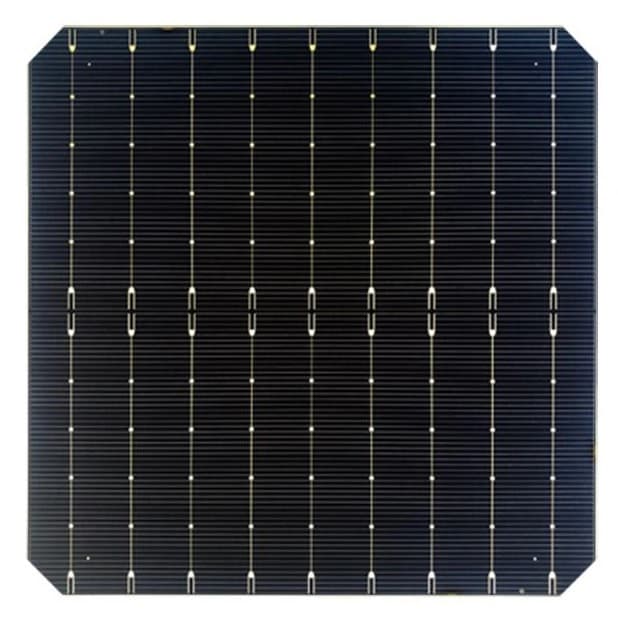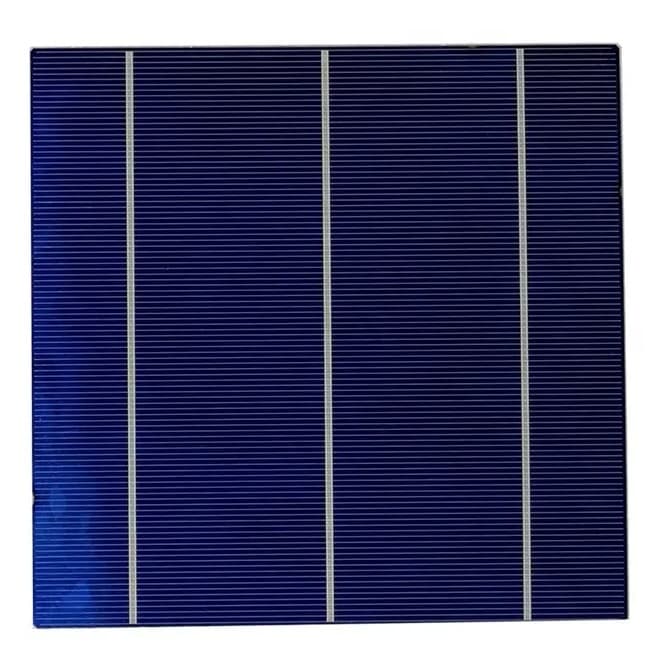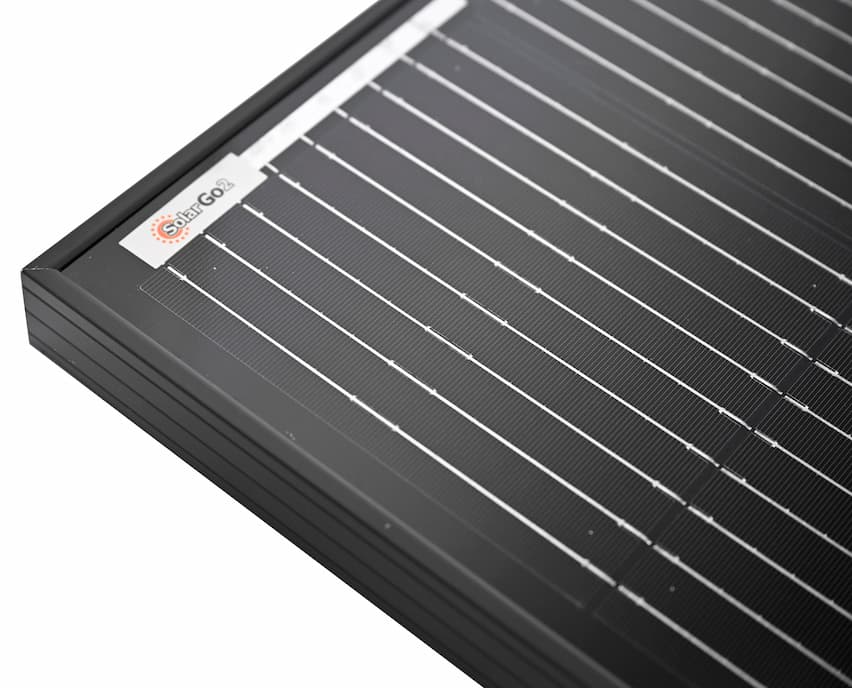This blog will explain solar panel efficiency. It's a complicated subject and often overlooked. It is very much related to the solar installation as a whole system and not just the solar panel.
For example if you integrate a very efficient solar panel with a poor performance charge controller and substandard wiring and connections, it completely defeats the object.
With many solar installations the energy production can be relatively low, so the more efficient the installed components are, the overall installation performance will be much more useful, and therefore it should/will work!
So, it will be a huge benefit if the solar panel part of the system is as efficient as possible.
Cell or panel efficiency?
Firstly, we will look at solar panels efficiency. This a measurement of the amount of sunlight (irradiation) that the panel receives, and the panels ability to convert that light energy into electrical energy.
Many advances in photovoltaic technology have been made in recent years meaning the average panel conversion efficiency has increased from around 15% to just over 20%.
This is also linked to the fact that panel sizes (measured in watts) have increased, and manufacturing methods have been improved over the years.
Another consideration with solar panel efficiency is the solar panel physical size, so it's a combination of the physical size and the rated wattage output.
A module/panel is a collection of cells, typically 36/72 (Different cell number configurations are used to alter the designed output voltages).
Cell efficiency is the actual conversion of light energy to electrical energy of each of the individual cells within the solar panel. Cells are graded according to their efficiency and conversion rates before being sorted and going into production of solar panels.
You may hear the salesperson for a solar company say their panels are made with 'A' grade cells, and while this may be true its very hard to actually check that this is the case without checking the voltage output and current output of the solar panel.
So, the two efficiency considerations are, cell efficiency, and panel efficiency. But as a customer it's the panels overall efficiency that's the most important to you.
This confirms whether the panel's conversion rate is higher and will generally mean the solar panel can be smaller than similar units sold by competitors.
This benefit will mean that more energy will be available to charge batteries and power devices, charging rate will be higher and the panel will perform better in low light conditions. As technology improves, we will surely see higher efficiency rates.
Types of cells
There are various technologies that make up solar panels but the two main solar cells on the market are Monocrystalline & Polycrystalline.

Monocrystalline solar cells

Polycrystalline solar cells
Monocrystalline is one of the best cell materials available (and affordable). More exotic materials may be available to the likes of NASA, but it will take a long time to filter down to the normal retail market (due to the expense).
Polycrystalline is cheaper but less efficient and generally larger in size. However, in the correct conditions it can sometimes match the power output of the Monocrystalline cells. From our testing this is normally at low light levels in the morning or just before night time.
Here at SolarGo2 we use 'A' grade Monocrystalline cells. The cells have a higher voltage output which gives the panel an overall higher output voltage. This in turn will give better performance and charging rates.
This is especially noticeable when using MPPT voltage controllers, as MPPT controllers will work better with higher solar panel voltages. This will then improve the whole installation efficiency so a win win.
Standard Test Conditions
All solar panels will be tested to Standard Test Conditions (STC). This helps us to compare one panel to the next and should allow you to confirm the panel's efficiency and wattage is correct.
These test parameters are stated as:
Air Mass = 1.5
Temperature = 25°C
Irradiance = 1000W/m²
All this information should be found on the panel data plate or the panel's spec sheet. The tests are conducted during the manufacturing process and this test is known as flash testing.
How to calculate a panels efficiency
No matter what cells are used in the panel you can always work out the efficiency using the formula below:
Efficiency (%) = Pmax x 100 (Area x 1000W/m2)
Pmax = Max panel power (W)
Area = Panel area (m2)
So let's break this down into simple steps using one of our solarGo2 panels. Our 160W panel efficiency can be calculated.
Pmax = 160W (panels rated output)
divided by (Area 1.215 x 0.680 x 1000 = 826.2)
then times it by 100
160 / 826.2 = 0.193
0.193 x 100 = 19.3% panel efficiency
Now you know how to use the calculations to work out efficiency of a solar panel we can introduce you to a simple efficiency calculator that will do all the hard work for you.
Overall
Panel efficiency/performance can be influenced by many factors including temperature, irradiance level (sunshine), cell type, and interconnection of the cells. Surprisingly, even the colour of the protective back sheet can affect efficiency.
A black back sheet might look more aesthetically pleasing, but it absorbs more heat resulting in higher cell temperature which increases resistance which in turn slightly reduces total conversion efficiency. Total efficiency loss can be around 5-8%

SolarGo2 rigid black solar panel
Other factors that will affect efficiency and performance are:
- Shade.
- Partially shaded or completely shaded panels will not operate to designed performance.
- Orientation.
- Generally facing south at a tilt of 35-700. Maximum performance can be achieved by a tracking system.
- Location.
- Geographical location will affect performance, daylight hours, local weather condition & temperature.
- Panel contamination (Dust, dirt, bird droppings etc.)
- Dirt and contamination could restrict the amount of light reaching the solar cell, therefore reducing the efficiency of the panel.
- Time of year.
- Weather conditions and the position of the sun in the sky.
Please note: Any deviation from the STC conditions will lead to different test results. I.e., any change in irradiance, angle/orientation of the panel, or temperature.
Conclusion
Now we understand the solar panel efficiency and how we can check/calculate it, it is worth considering the other components in the installation.
A good quality charge controller is essential for the efficiency of the system. PWM controllers are great if you have a single panel but lose out if more than one panel is connected in series.
But even on a single panel system they will not quite beat the MPPT charge controllers that will generally give a better overall charge rate, and as a bonus usually have a connectable monitoring system.
Finally don't overlook the final part of the system. The correct gauge of good quality cable will also help with circuit resistance and voltage drops over distance, giving you the best output from the solar panel to your battery.
If you want to know more about getting the best from your solar panel, read our blog Getting the best from your solar panels.
Kevin
